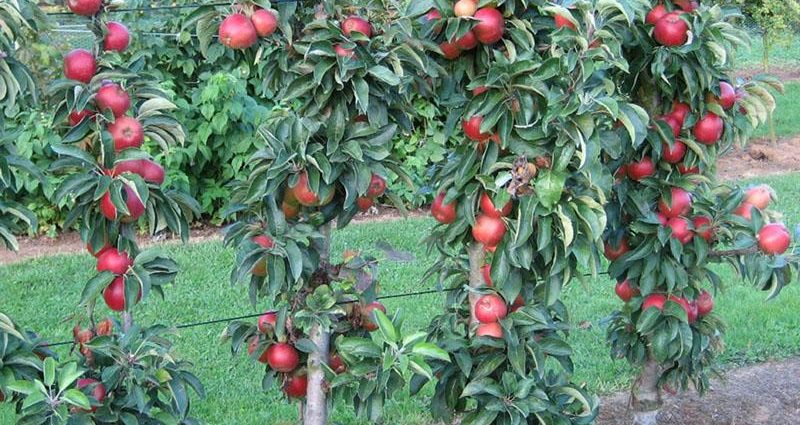Contents
Every year the popularity of columnar apple trees increases. Many gardeners have appreciated the benefits of creating a useful and very beautiful garden with these compact trees, and breeders, in turn, do not tire of offering new, more productive and winter-hardy varieties. One of these highly productive varieties is “Amber Necklace” – a columnar apple tree of winter ripening with magnificent light fruits. A description of the apple tree and its brief description will be presented in this article.
Variety description
Apples “Amber Necklace” reach removable maturity in September, but consumer demand for fruits begins only after 1-2 months, so the variety is called winter. A distinctive characteristic of this apple tree is high winter hardiness (it is successfully grown even in Siberia), as well as good yield (15–20 kg per tree). And all this despite the fact that this columnar apple tree belongs to semi-dwarf trees – its height is only 2–2,5 m.
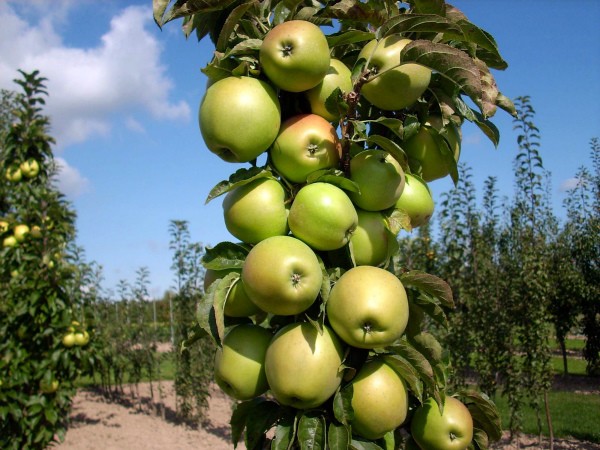
As already mentioned, the crown of the tree is columnar – the branches depart from the trunk at an acute angle, and rush upwards. The trunk is thickened, the main and lateral branches are shortened, sometimes they are replaced by ringlets. The bark is smooth, gray-brown. The leaves are glossy, intense green, with small notches along the edge. The flowers are white, large, saucer-shaped. The fruits in full ripeness have a beautiful yellow-amber color, for which, apparently, the variety received such a beautiful name.
The apple tree is self-fertile – for its pollination, another variety is needed, with the same flowering period. Fruiting occurs quite early – the next year after planting, however, at this time, the development of ovaries should not be allowed, since the tree must first get stronger. Normal fruiting begins at the age of 4–5, and after about a couple of years, the yield becomes stable at a level of at least 15 kg per 1 tree. On the apple tree, the fruits are evenly distributed, which facilitates harvesting.

Characteristics of fruits
Apples of this variety are of medium and above average size (140–180 g), but provided that there are few ovaries on the tree, they can grow up to 300 g. The shape of the fruit is correct, round, slightly flattened. The peel is very dense, but thin, has a greenish-yellow color with a slight blush on one side or at the stalk. When ripe, the apples acquire a delightful golden yellow color.
The pulp of the fruit is snow-white, very juicy and crispy, with a sweet dessert taste. According to some gardeners, “Amber Necklace” apples can remain on the branches for a long time and not fall off, in which case the pulp becomes literally transparent and sweeter than with normal ripening in boxes. The fruits have an excellent presentation and a long storage period – more than 5 months, but in good conditions they are safely stored almost until the end of spring.
Advantages and disadvantages
It should be said that any columnar apple tree has clear advantages over trees with a regular crown, which we will discuss later.
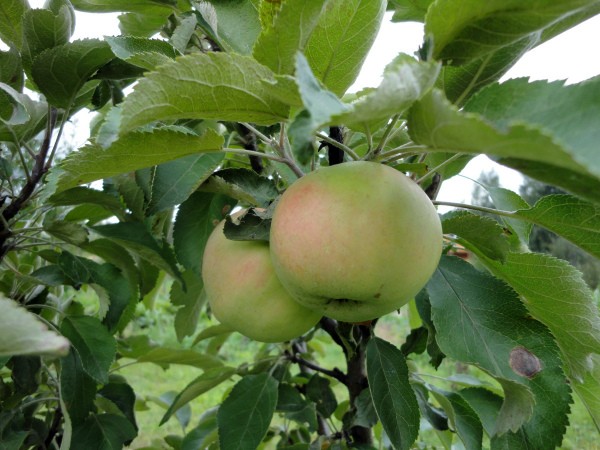
Crown compactness. Apple trees of this variety are recommended to be planted at a distance of 0,5 meters from each other and 1 m between rows. Such planting significantly saves the usable area of the garden, since dozens of columnar trees can be planted in the place of one ordinary apple tree. In addition, a tree can be planted on any empty piece of land without worrying that it will create a shadow for other plants.
Ease of care. The absence of a crown greatly facilitates tree care. It is easier to spray, fertilize, loosen the soil, harvest (no ladder required). Such an apple tree practically does not need pruning, and in autumn it does not fall as much foliage as from an ordinary tree.
Early and intensive fruiting. An apple tree of this variety begins to bear fruit 2-3 years after planting (provided that the seedling was 1 year old), but often in nurseries you can find a one-year-old seedling that already has several ovaries.
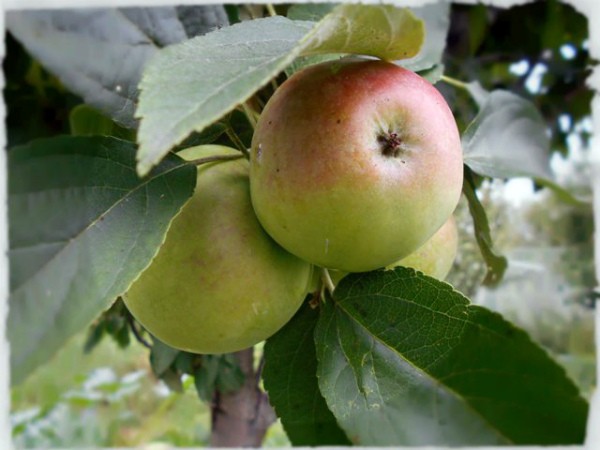
High yield. If we compare the yield of one ordinary apple tree with a columnar one, then the yield of the first one, of course, will be greater. But if you take into account that many columnar apple trees can be planted on the garden area, and besides, you can choose varieties with different ripening periods, then the yield will increase many times over.
decorative qualities. The columnar apple tree looks more well-groomed, it is beautiful during its flowering period, and especially during the fruiting period. Such a tree will decorate any garden, both in group plantings and in single ones. Some designers even practice planting such apple trees in the center of the landscape composition.
Excellent taste qualities. As already mentioned, the fruits of the “Necklace” apple tree have an excellent taste, and they can be consumed fresh all winter and even in spring.
As for the shortcomings, they also exist – this is a rather high cost of seedlings and a relatively short fruiting period (15–20 years). From about the 10th year of life, the productivity of the tree begins to decline, and after another 5–7 years the apple tree will have to be replaced.
Video “Columnar apple trees”
This video will introduce you to new varieties of columnar apple trees, as well as their agricultural technology.
Subtlety of cultivation
In order for the columnar apple tree to be healthy and bring high yields for as long as possible, it is necessary to properly care for it. The main, and most important stage in the care of the Necklace variety is the normalization of the crop. The tree is prone to the formation of a large number of ovaries, which are almost impossible to bring to full maturity.
In the first year after planting, all flowers should be removed from the tree so that it does not waste energy on fruit ripening. In the second year, you can leave 5-10 fruits, and from 3-4 years you can count on harvesting.
The normalization process is carried out during flowering, and then again, during the growth of the ovary. Since the tree blooms very profusely, you can safely remove half of the flowers, leaving 2 bouquets on each ringlet. When ovaries appear on the apple tree, it is necessary to remove about half of the weakest and smallest ovaries again. If you want to achieve downright incredible sizes of apples (200-300 g), then you can leave no more than 1-2 large fruits in one link, and remove the rest.
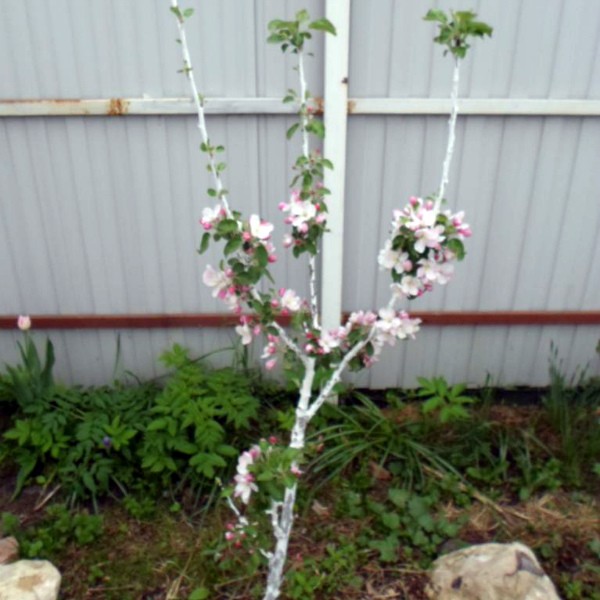

Since the roots of this apple tree are located close to the surface, and loosening is contraindicated for it, the only way to maintain the health of the root system and the whole tree is to plant grass in the trunk circles. This event facilitates the care of the tree, the main thing is to mow the grass on time. On top of such a lawn, watering can be carried out, fertilizers can be applied. As for watering, this variety prefers drip irrigation, as well as sprinkling about 1 time in 3 days in summer.
Apple trees are fed 3-4 times per season: the first top dressing at the end of April (urea 20 g / 1 sq. M.), the second – before flowering (liquid mullein 1 kg / 10 l of water), the third – in the summer, during the development of ovaries (ash 200 g / 1 sq.m.). In autumn, humus 5 kg / 1 sq. M. is closed up in near-trunk circles. In rare cases, side shoots develop on the apple tree – this can happen if the tree has been ill. In this case, pruning of the resulting shoots to a length of 15–20 cm is required. Since the growth of the tree depends on the apical bud, it is necessary to carefully monitor that it is not damaged.
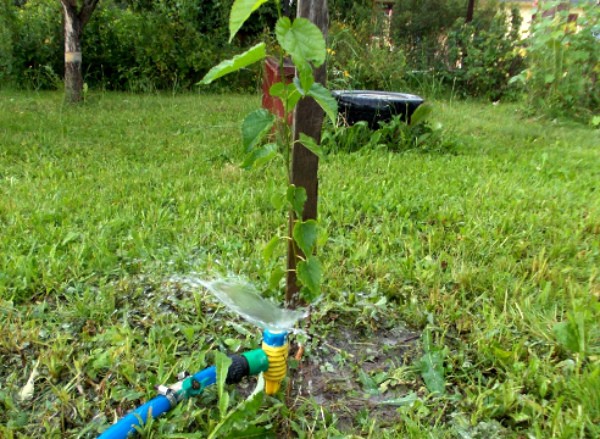

Diseases and pests
Columnar varieties are considered more adapted to various diseases. For example, such an apple tree is less likely to be affected by a fungus, since its crown does not create shadows and stagnant moisture. In particular, the Necklace variety is considered very resistant to scab and moderately resistant to powdery mildew. However, other diseases (black or common cancer, mosaic, rust, viral spotting) the tree is exposed to quite often.
Many gardeners in early spring and autumn treat apple trees with Bordeaux liquid for prevention, and, as a rule, this is enough to prevent the plant from getting sick. But if, nevertheless, the tree has undergone a disease, then it must be sprayed with fungicides (“Nitrafen”, copper or iron sulphate).
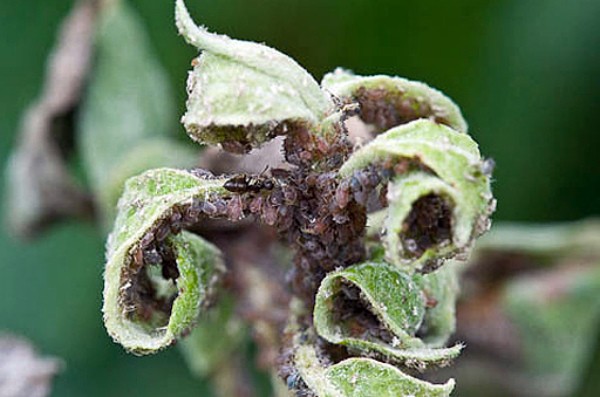

Variety Necklace is not very often attacked by pests. This can be evidenced by even, one to one, bulk fruits, which are almost never damaged. Codling moths, various leafworms, apple moths, sawflies, suckers and other butterflies and caterpillars are quite rare guests of this apple tree. The only pest that has been seen on trees is aphids.
To get rid of insects, treatment with a solution of urea, insecticides (Karbofos, Chlorophos, Spark, Decis) is recommended, however, such measures are necessary if the columns of these microscopic insects have multiplied throughout the tree. With a small localization, the problem is solved with the help of the same Bordeaux liquid or folk remedies: a solution of laundry soap (40 g) with tobacco (500 g), yarrow (700–800 g), or ash (3 cups). Crushed soap and one of the above components are poured into 10 liters of warm water, infused for 2-3 days, after which the trees are sprayed with a solution.
Video “Columnar apple tree on a dwarf rootstock”
This video will tell you why it is better to plant a columnar apple tree on a dwarf rootstock. You will learn about varieties of apple-columns, planting and caring for them.
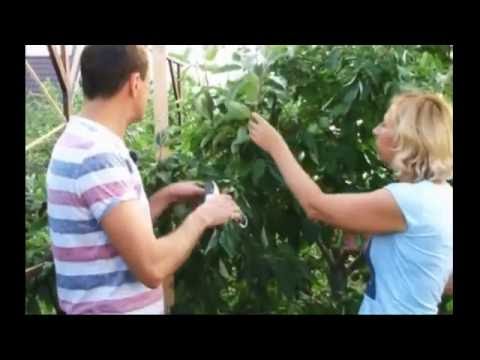

Смотрите это видео на YouTube










